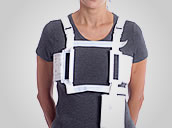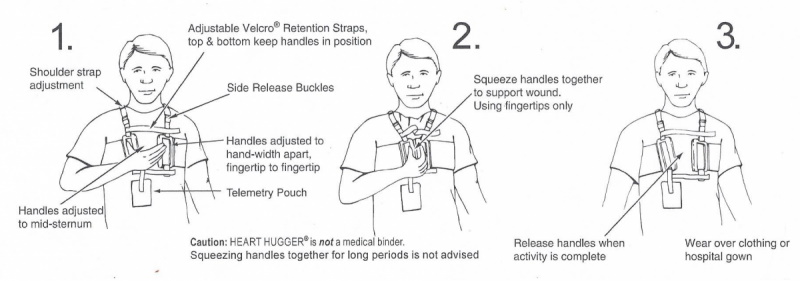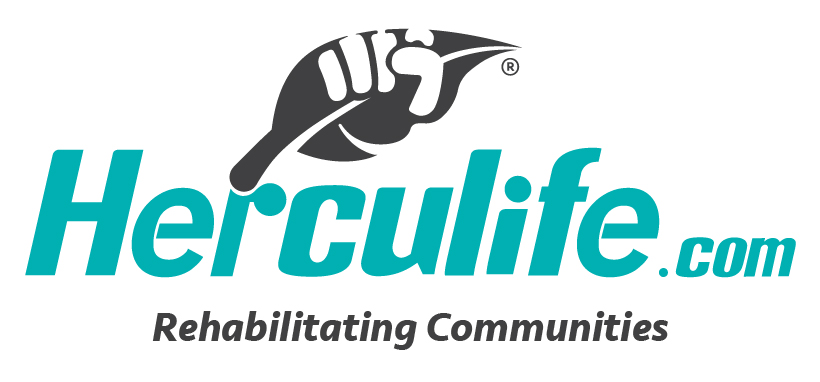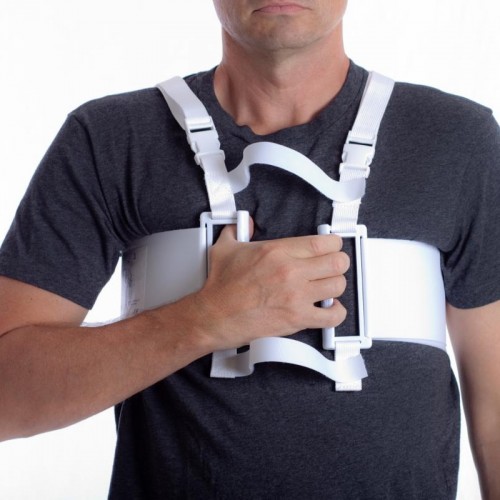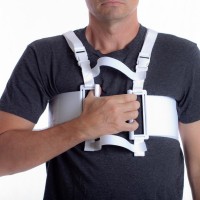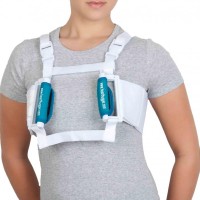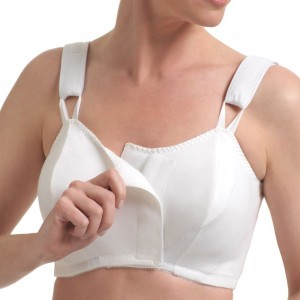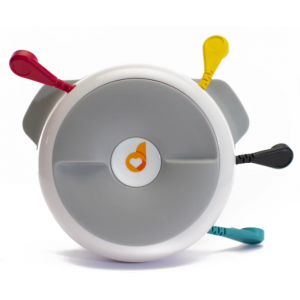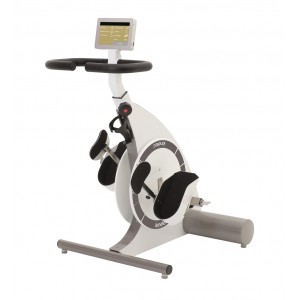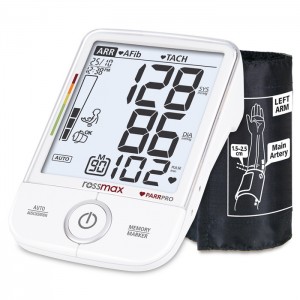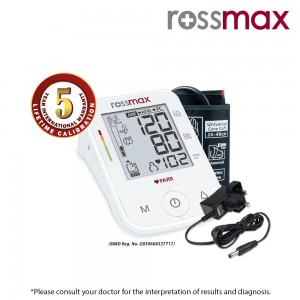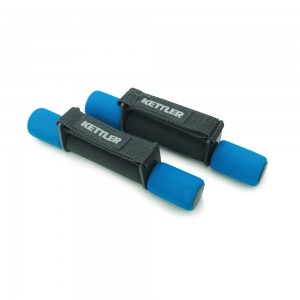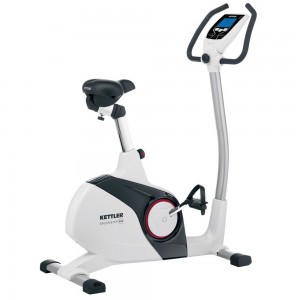WHAT IS HEART HUGGER?
Heart Hugger is a simple, on demand, patient-operated harness that provides patients with full-time wound stability, sternal support, pain management and fewer wound complications after a sternotomy. When the handles are squeezed together, Heart Hugger™ circles the rib cage with uniform pressure and support. It is applied immediately after extubation and continues to work at home after discharge.
Heart Hugger provides complete wound support following thoracic surgery for all your patients. Improves patient comfort, pain management and speeds return to pre-op respiratiory levels.
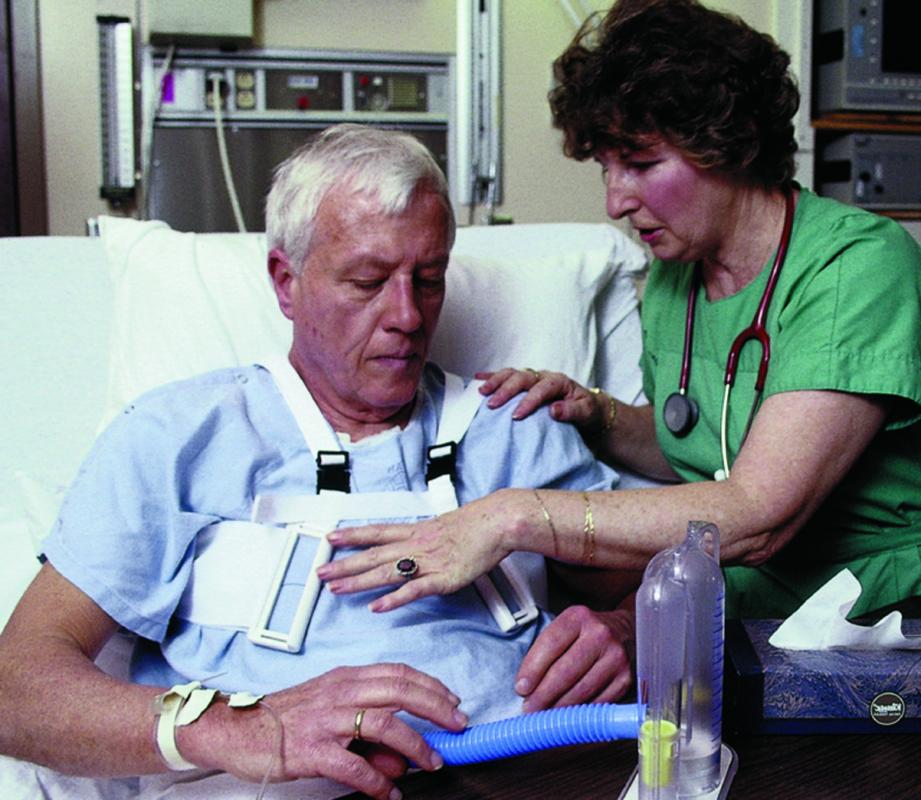
BEYOND PHYSICAL SUPPORT
Heart Hugger is excellent for relieving patient pain, particularly when they need to cough, sneeze, or do other activities that require excess movement. The physical support helps stabilize the wound for physical pain relief instantly. But Heart Hugger provides so much more than physical support.
GETTING THEIR FEET BACK UNDER THEM
After surgery, patient's lungs need to expand and expel the excess vapor that collected in the lungs while they were being ventilated. That’s why respiratory therapy and coughing are so important to patient recovery. However, coughing and breathing deeply after such a major surgery can be very painful and potentially harmful to the new wound.
The Locus of Control Theory supports the idea that when patients are involved in their own recovery, their healing is enhanced as they feel an increased level of control, confidence, and independence. By putting part of the pain control process in their hands--literally-- patients are more focused and more comfortable.
DECREASING FUTURE COMPLICATIONS
After a major chest surgery, Heart Hugger helps defend against a multitude of potential complications. Heart Hugger aims to help return the patient to pre-op respiratory levels and stabilize the wound. Meeting these goals helps avoid wound complications including:
- Dehiscence
- Mediastinitis
- Atelectasis
- Pneumonia
AMAZING RESULTS AT THE TIPS OF THEIR FINGERS
Not only are the results of Heart Hugger incredibly important, but the device itself is simple to use. A nurse or loved one can easily help the patient adjust the straps so it’s comfortable, and a simple squeeze of the hand is all it takes to engage Heart Hugger and reduce pain. Heart Hugger is worn over clothing and made of soft straps for comfort and easy adjustment.
HOW TO USE
THE SET-UP PROCESS
Getting the Heart Hugger on and ready to use is simple. Most patients will need the assistance of a nurse or loved one to assist, but putting it on is easy and quick. It’s best to try on and adjust the Heart Hugger before the operation so it’s ready to go right after surgery. Details on how to correctly size and fit Heart Hugger can be found on our sizing and fitting page. Similar to a vest or backpack, you put the Heart Hugger on one arm at a time. Here are the quick steps for helping a patient get situated in a Heart Hugger:
Detach the shoulder strap from the handle on one side and slide the handle under the patient’s arm. Bring the shoulder strap over the shoulder and reattach it. Repeat this process on the other arm.
Adjust the straps around the chest as needed so the handles are one hand-width apart for the patient so they can easily grasp them together single-handedly.
Adjust the straps over the shoulders so the fit is comfortable and the handles rest on the patient mid-chest.
Fasten the velcro retention strap to keep the handles in place.
WHEN TO USE THE HEART HUGGER
Once the patient is situated, they can use the Heart Hugger whenever they cough, sneeze or make movements that are strenuous or uncomfortable. The encircling support provides relief when moving or breathing deeply.
ADJUSTMENTS FOR WOMEN
On women, the Heart Hugger can fit a bit differently depending on stature and breast size. Heart Hugger can be adjusted easily to accommodate different body types. Handles should be adjusted to set just above the breasts with the handles remaining as parallel as possible. To accomplish this, angle the wide chest strap at a slight upward angle from back to front and use the retention strap to keep the handles situated. If the patient finds the device binding under the armpits, the chest strap can be moved down the back further keeping the angle point upward and the handles on top of the breasts. The handles may flare out a bit at the bottom, which is fine so long as the patient can still grasp both handles with one hand.
USERS WHO HAVE USED HEART HUGGER SAYS:
"I greatly appreciated Heart Hugger during my recovery period after my own open heart surgery. I found it made me feel a lot more comfortable."
- Vernon Stafford, M.D.
"I am impressed that as I have followed up my patients in the office, they have continued to comment that the Heart Hugger appliance made their convalescences much easier at home, and that they have continued to use it beyond hospitalization."
- Michael F Teodori, M.D., Pediatric & Adult Cardiovascular Surgery
"I strongly believe that the support harness has played the major role in preventing sternal wound separation."
- David G. Eilertson, M.D., Thoracic & Cardiovascular Surgery
"I have used the support harness in over 100 consecutive open heart surgical patients during the last two years. I clearly am in favor of using Heart Hugger on a routine basis."
- Ravi Koopot, M.D., Cardiovascular Surgery,
"Heart Hugger helps my patients get well faster by giving them the confidence to cough, knowing they will not suffer from doing so."
- J. Marvin Smith, M.D., Cardiovascular Surgeon
"...Since the patient can wear the harness it has the advantage of being available when the need arises, for the instance, during therapy, or when the patient wakes up at night."
- Peg Meisler, Physical Therapist
"I recommend and prescribe it for all my open heart patients. They testify that their recoveries have been much quicker while using Heart Hugger compared to prior surgeries when the device was not available."
- S. Vathayanon, M.D., Cardiac, Vascular & Thoracic Surgery
"Over half our patients are released by the fifth post-operative day and many by the fourth post-operative day. I believe this is due in a large part to the fact that we have a device available which allows the patient to continue aggressive coughing and deep breathing at home, with much less discomfort."
- David G. Ellertson, M.D., Thoracic & Cardiovascular Surgery,
"It gave me more confidence to do things on my own. I should've bought it sooner."
- Laura P.
"They were impressed when I showed them how it worked and how I did not feel the pain when doing breathing exercises."
- James B.
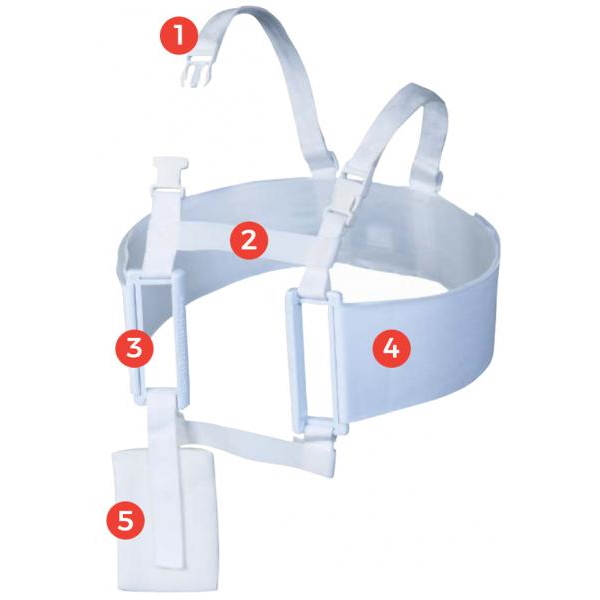
SIZING AND FITTING
1. Adjust shoulder straps so handles are at mid-sternum. (Shoulder straps are detachable) For women: handles go above breasts.
2. Handles are parallel to each other, evenly spaced away from wound. If patient slides down when their bed is raised, HH may ride in back and handles will be too low: have patient lean forward while you tug down on the back of the chest strap to bring handles to mid-sternum.
3. Pouch can be used for telemetry unit.
4. Use Velcro® chest strap to adjust handles on each side so they are one hand width apart; fingertip to fingertip. Handles that touch or pass each other.
5. Use the Velcro® retention straps (above and below handles) to hold handles in place.
Patient squeezes handles together with fingertips only whenever they cough, sneeze or move.
DECREASE PAIN, INCREASE QUALITY OF LIFE
Heart Hugger is a simple, lightweight, and comfortable way to decrease and manage pain after thoracic surgery. It’s a simplistic system that is easy to size, fit, and put on (with the help of a nurse or loved one). Heart Hugger comes in multiple sizes and has many adjustable straps so it can be set to fit a wide variety of body types and sizes.
SIZING BEFORE SURGERY
The best practice with Heart Hugger is to measure, size, and adjust before surgery. This will be much easier on the patient and make it easy to help them slip on after surgery. First, take a few measurements to determine which size of Heart Hugger to purchase. For men, measure chest circumference at the nipple line. For women, measure above the breasts.
Heart Hugger sizing:
Small Medium Large X-Large
22”-38” 36”-55” 45”-72” 50”-90”
55-96 cm 91-138 cm 114-181 cm 127-228 cm
ADJUSTING THE STRAPS
When sizing the patient, have them put on the Heart Hugger and then evaluate the chest strap. Adjust it so the handles are centered around the sternum with just enough space between them that the patient can grasp both handles with one hand.
Next, fasten the retention straps above and below the handles to help secure them in place. The handles should be as close to parallel and evenly spaced on either side of the wound as possible. Also, adjust the shoulder straps so the chest belt is comfortable and not digging into the armpits. Vertically, the handles should be mid-chest on men and above the breasts for women. More details on adjustments for fitting women can be found on the how to use page.
PUTTING THE HEART HUGGER ON AFTER SURGERY
To put the Heart Hugger on when the patient is out of surgery, detach the shoulder strap from the handle on one side and slide the handle under the patient’s arm. Bring the shoulder strap over the shoulder and reattach it. Next, help the patient lean forward and help adjust the chest strap so it lies flat on the patient’s back (like you’re helping them put on a backpack). Then lean them back, and attach the other shoulder strap in the same way as the first.

